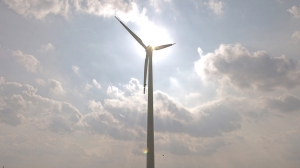Belarus GDP energy intensity 2.5% down in 2019

MINSK, 24 February (BelTA) – The energy intensity of Belarus' GDP dropped by 2.5% in 2019, representatives of the Energy Effectiveness Department of the State Standardization Committee of Belarus told BelTA.
The Energy Saving government program set out to reduce the GDP energy intensity by 1.3% in 2019. According to the National Statistics Committee, the figure dropped by 2.5% instead. Belarus' GDP energy intensity improved in comparison with Canada's and approached the GDP energy intensity Finland boasts. As for industrially developed CIS nations, Belarus' GDP energy intensity is 30% lower than that of the Russian Federation.
Targets set by the Energy Saving program for 2019 were hit by most of the government agencies and regions, except for the administrations of Vitebsk Oblast and Mogilev Oblast, the Industry Ministry, the state food industry concern Belgospishcheprom, the timber, woodworking, pulp and paper industry concern Bellesbumprom, and the state light industry concern Bellegprom.
As much as 964,400 tonnes of equivalent fuel was saved in 2019 while the target was 920,000 tonnes. The assimilation of modern energy-effective technologies and the reduction of energy consumption by existing technologies, processes, equipment, and materials in the manufacturing sector saved as much as 320,300 tonnes of equivalent fuel.
The share of local resources in the gross consumption of fuel and energy resources amounted to 16.2%. The share of renewable energy sources in the gross consumption of fuel and energy resources stood at 6.7%. As many as 25 sources of heat energy burning wooden fuel and peat were commissioned as well as three wind-driven power plants, and three biogas plants.
As much as Br2.4 billion was earmarked for financing energy-saving measures of the government program in 2019. As much as Br1.27 billion (53.1% of the target) was spent. As much as Br1.18 billion was spent on the subprogram designed to increase energy effectiveness. As much as Br94.4 million was spent on the subprogram designed to encourage the use of local fuel and energy resources, including renewable energy sources. The money mainly came from proprietary savings of organizations and as credit resources from banks (62.4% of the total investments). The share of municipal budgets totaled 25.5%, with the share of the central state budget at 6.6%.
Speaking about plans for 2020, Energy Effectiveness Department of the State Standardization Committee of Belarus noted that the head of state wants to deter the growth of the overall consumption of fuel and energy resources and bring the energy intensity of the country's GDP in terms of the purchasing power parity closer to the world's average. Close attention will also be paid to tapping the potential domestic fuel and energy resources, including renewable energy sources.
As for international cooperation, in 2020 the Energy Effectiveness Department will continue preparing and implementing projects to bolster energy effectiveness and encourage the use of renewable energy sources together with international organizations.
In particular, the agency will continue implementing the investment project designed to use wooden biomass for centralized heating together with the International Bank for Reconstruction and Development (IBRD). The project provides for building and reconstructing municipal boiler houses to encourage the use of wooden fuel. The volume of credit resources stands at $90 million. The project is supposed to be implemented in 2014-2021.













